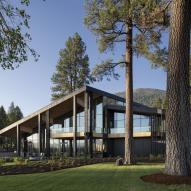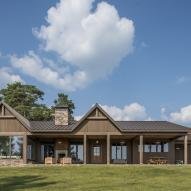RED “SHADOW” PINE SALVAGED FROM HISTORIC TILE MANUFACTORY
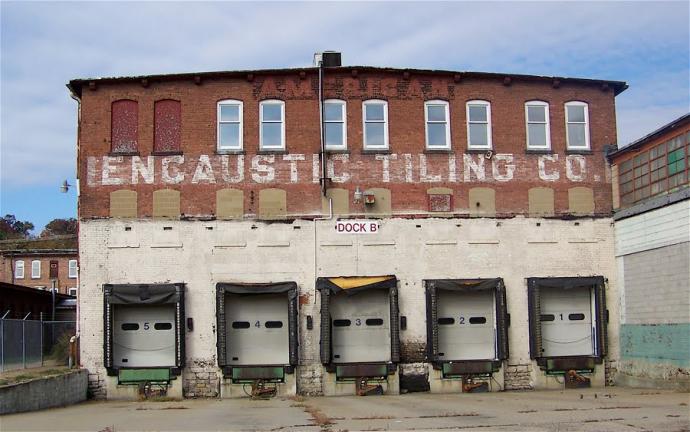
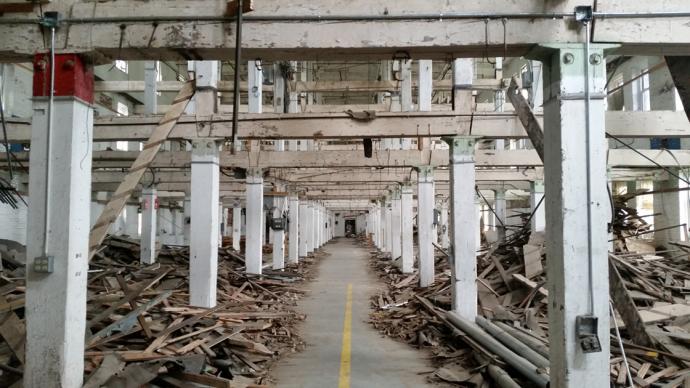

In 1892, the American Encaustic Tiling Company (AETCO) built an expansive tile manufactory on the banks of the Muskingum River in Zanesville, Ohio. Red Pine was a significant component in its construction, as it was for many buildings during the Industrial Revolution. The structure stood for 124 years until it had outlived its usefulness and was demolished in 2015. Pioneer Millworks was able to acquire a load of Red Pine from the industrial salvage, totaling around 13,000 board feet.
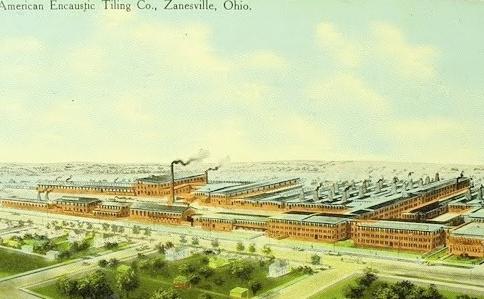
When demolition of the Zanesville plant began, the original ‘American Encaustic Tile’ facades were unearthed, a reminder of one of the world’s pioneers in the tile industry. Originally founded in New York City in 1875, AETCO quickly grew and expanded operations to Zanesville. A massive producer of floor tiles, wall tiles, and accent tiles of all sizes, patterns, and colors, the Zanesville operation was considered the largest and most distinguished tile manufactory in the world at the turn of the 20th century, employing at least 1,000 people and cranking out unique ceramic tiles for homes and businesses across the nation.

The unique features of this reclaimed Red Pine are the original paint and wear marks as well as a striped appearance created from the ceiling joists running across the underside of the floor, which left a “shadow” when removed after a century in place. This Red Shadow Pine is celebrated for its unique character and history.

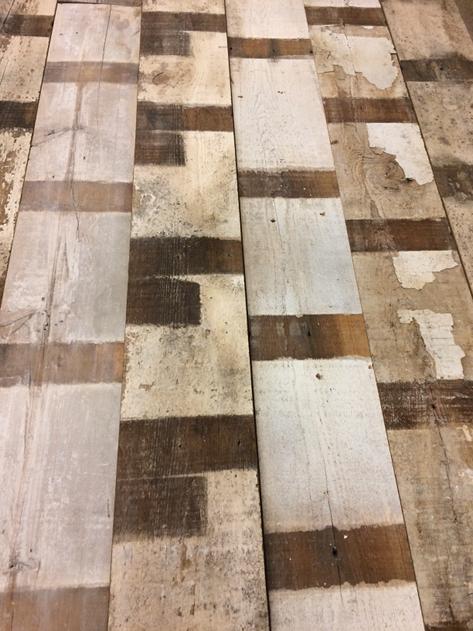
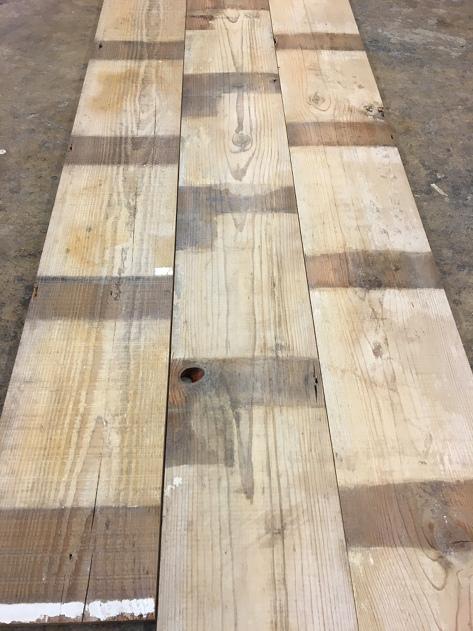
It is always a privilege to rescue antique wood from rot or landfills. Our reclaimed Red Shadow Pine from the AETCO plant has tones of red and yellow, with streaks of resin, numerous knots and holes, as well as minor surface cracks. The joist shadows on each plank create a striking pattern and a reminder of the wood’s former life. Some of the timbers were milled into paneling in our Farmington, New York shop for a major retailer’s project. The white paint was removed and the boards were finished with a matte Polyurethane.
About Red Pine:
During the later years of the industrial revolution, builders could not solely rely on the dwindling supply of Longleaf Yellow Pine from the Southern US. Other species of softwood timbers, such as White Pine, Red Pine, and coarse-grained species of Yellow Pine were also used based on geographic availability and lower cost. The Red Pine (Pinus Resinosa) is a native of the lake states and eastward throughout New England and southeastern Canada. It grows in a narrow zone around the Great Lakes and the St. Lawrence River and was widely used in heavy timber industrial structures within and around those regions.
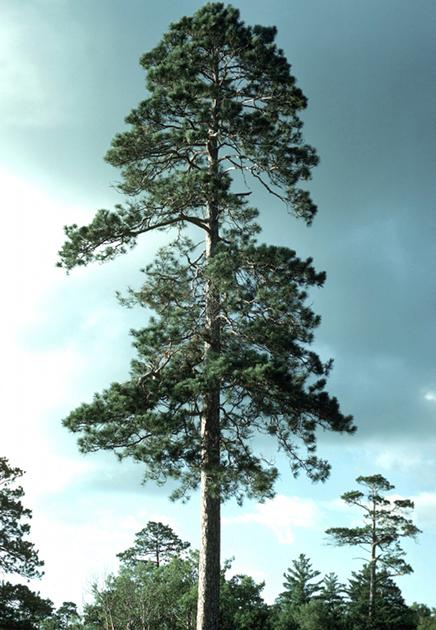
- Red Pine timber was nearly depleted during the logging heyday of the 1890’s.
- Red Pine will normally reach a mature height of 75-100 feet.
- The tree gets its name from its reddish-brown, scaly bark and red heartwood.
- Red Pine has a distinct, resinous odor when being worked.
- Red Pine is very resistant to disease and insects.
- During the Depression in the 1930s, the Civilian Conservation Corps (CCC) planted millions of Red Pine plantations.
- Most of the wooden telephone poles in Michigan and surrounding states are Red Pine.
- Itasca State Park, Minnesota’s oldest state park, is the best place to see some of the oldest Red Pines as the park features about 5,000 acres of them.


